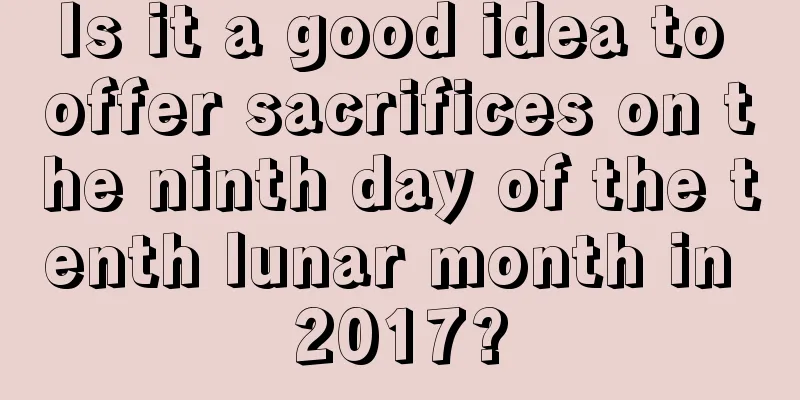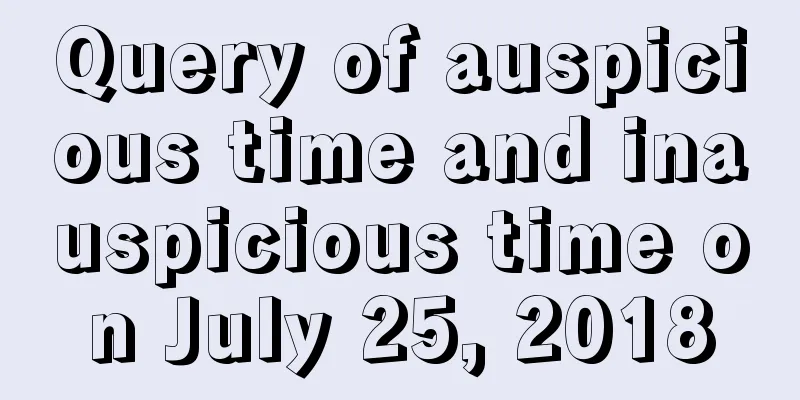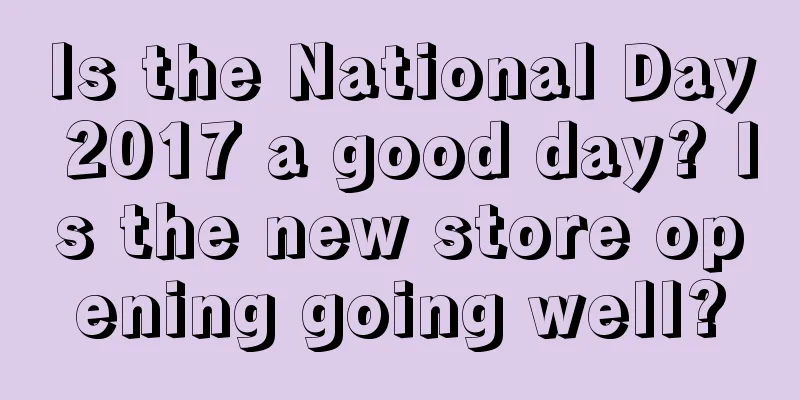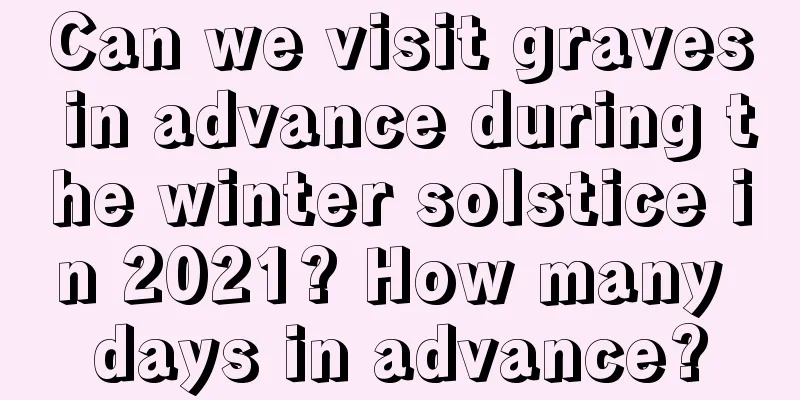What customs are there during the Winter Solstice? What do the three signs of winter solstice mean?
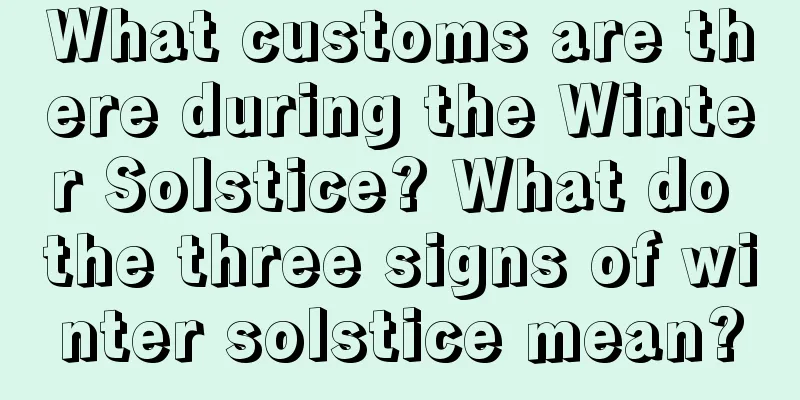
In ancient times, New Year's Day, Cold Food Festival and Winter Solstice were collectively known as the "Three Major Festivals", and the Winter Solstice was regarded as the "Sub-New Year". "Winter Solstice" is the natural transformation of yin and yang, and is a blessing bestowed by God. What are the customs of the Winter Solstice? What do the three signs of winter solstice mean? In the eleventh month of the lunar calendar, the north wind was biting and the cold current was rolling, brewing a heavy snow. Shuimoxiansheng.com presents you with wonderful content for November 2018 of the lunar calendar.What are the customs of the Winter Solstice?Offering sacrifices to heaven <br /> Rulers of all dynasties offered sacrifices to heaven on the winter solstice. "Sacrificing to Heaven" is the ancient "suburban sacrifice" ceremony, which is a ceremony that must be held on the winter solstice by emperors of all dynasties to ward off disasters and pray for blessings.In the Northern Song Dynasty, sacrifices to heaven were mostly held in the southern suburbs of the capital, while in the Ming and Qing Dynasties, they were held at the Round Mound of the Temple of Heaven in Beijing. In ancient times, a round mound was a round earthen hill that was higher than the ground. It symbolized the roundness of the sky. Therefore, on the night before the ceremony of offering sacrifices to heaven, the emperor had to fast and bathe and live in the Zhai Palace. The ceremony of offering sacrifices to heaven was held on the winter solstice. Ancestor worship <br /> In folk culture, there is a custom of worshipping ancestors on the winter solstice. The ritual of worshiping ancestors on the Winter Solstice is the same as that on New Year's Day. While offering sacrifices to their ancestors, people also pay respects to their parents and elders. In ancient times, there was a custom of presenting shoes and socks to the elderly, and this custom is still very popular today. There is a proverb in Fujian and Taiwan that goes, "The Winter Solstice is as important as the New Year's Day, and if you don't go back, you will have no ancestors to visit." All those who go out to make a living must rush back to their hometowns to celebrate the New Year during the Winter Solstice, which means they will have a home at the end of the year. In the Chaoshan area of Guangdong, people prepare three kinds of animals and fruits on the day of the winter solstice and go to the ancestral temple to worship their ancestors. After that, the family will eat together around the table. The worship is usually completed before noon, and the family will gather for lunch. But in the coastal areas of Haishan in Raoping, people would offer sacrifices to their ancestors early in the morning before the fishermen go out to sea to fish, asking the gods and ancestors to bless the fishermen to return safely from the sea. In Hui'an, Guangdong, in addition to ancestor worship, the Winter Solstice Festival also has some similar customs to the Qingming Festival, such as visiting tombs and offering money within ten days before and after the Winter Solstice, and there is no taboo on repairing and moving tombs. In Taiwan, there is a tradition of using nine-layer cake to worship ancestors during the winter solstice. People use glutinous rice flour to make chickens, ducks, turtles, pigs, cows, sheep and other animals that symbolize good luck, fortune, wealth and longevity. They then steam them in layers in a steamer and use them to worship their ancestors to show that they remember their ancestors. People of the same surname and clan gather at the ancestral temple on the winter solstice or on an agreed-upon date before or after it, and worship their ancestors one by one in order of seniority, commonly known as "ancestor worship." After the ceremony, a grand banquet will be held to entertain the relatives who come to worship their ancestors. Everyone drinks happily and reconnects with each other, which is called "eating ancestors". The Winter Solstice Festival is a time to honor ancestors. It has been passed down from generation to generation in Taiwan. To show that they have not forgotten their "roots". Counting the Nines <br /> People call the winter solstice "Jiaojiu" or "Counting the Nines", which means starting from the winter solstice, every nine days is a "nine", a total of 9 "nine", a total of 81 days, and spring will come after 81 days. Counting the nine-nine days after the winter solstice is very popular all over the country. People in different regions have compiled various proverbs and rhymes for counting the nine-nine days according to different climatic conditions, scenic features, agricultural phases and customs. These proverbs and proverbs are recorded in many ancient books. The most representative of these is the following jingle: On the 19th and 29th days, don't go out; on the 39th and 49th days, walk on the ice; on the 59th and 69th days, look at the willows along the river; on the 79th day, the river opens; on the 89th day, wild geese come; on the 99th plus 19th day, oxen walk everywhere. The proverbs and rhymes about the nine-nine days are not only a summary of people’s experience with the climate over the years, but also a kind of anticipation for spring in the severe winter. Sticking dumplings on the door <br /> In southern Fujian and Chaoshan, during the winter solstice, in addition to eating glutinous rice balls, people also roll two large dumplings and stick them on the door knocker, symbolizing reunion and good luck. This custom originated from a folk legend: On the winter solstice of one year, an old beggar had no money to bury his wife who had frozen to death, so he had to sell his daughter to a rich family as a slave. The daughter was in so much pain that she fainted. The old beggar quickly begged for a bowl of rice soup and fed it to his daughter mouthful by mouthful. Slowly, his daughter finally woke up. The old beggar got a few more glutinous rice balls for his daughter and comforted her: "Our separation today is like the two halves of this ball. Now we each eat half, and when life gets better in the future and we are reunited, we can eat the balls again." After that, the old beggar said goodbye to his daughter, buried his wife, and went on to beg again. Three years passed, and the old beggar still did not come back to find his daughter. His daughter missed her father and hoped that they could be reunited soon. During the winter solstice festival one year, she came up with an idea and suggested to her master: "Everyone eats glutinous rice balls during the winter solstice, so we should also offer them to the door gods." The master agreed, and she rolled two large glutinous rice balls and stuck them on the door knocker to express her longing for her father. Her filial piety moved later generations, and it became a custom that has been passed down to this day. What do the three signs of winter solstice mean?Winter Solstice: the first sign is that earthworms knot knots; the second sign is that worm horns shed; the third sign is that springs begin to flow.Earthworm Knot: Legend has it that earthworms are creatures that bend with yin and stretch with yang. Although the yang energy has grown at this time, the yin energy is still very strong, and the earthworms in the soil are still curled up. The horns of the deer antlers are shed: The deer and the elk are in the same family, but have different yin and yang. The ancients believed that the horns of the deer antlers grow backwards, so they are yin. But when yang is born at the winter solstice, the deer feels that the yin energy is gradually receding and the horns fall off. The spring water in the mountains is flowing and warm. |
<<: List of auspicious days for picking up a new car in November of the lunar calendar 2018!
Recommend
Details on the auspicious and inauspicious times on the sixth day of the eighth lunar month in 2019!
People who go to school are busy studying every d...
Is it a good idea to move into a new home on March 3, 2022? Which ethnic group in my country celebrates the March 3rd festival?
Although many people move every day, it is not pos...
Is it okay to break ground on November 21, 2020 in the lunar calendar?
Chinese people have always liked to follow the inh...
Is it suitable to travel on the 24th day of the sixth lunar month in 2018? What is the hexagram?
Introduction: The lunar calendar is one of my coun...
Can I have a caesarean section on October 20th of the lunar calendar in 2021? What's the omen for this day?
October is here. Is October 20th of the lunar cale...
Is the 2017 Cold Clothes Festival a good occasion? Is it okay to get married during the Cold Clothes Festival?
Introduction: In our country's traditional con...
What is the fate of a girl born on the Spring Equinox on March 21, 2019? Is she born to bring good luck to her parents?
Introduction: Although everyone cannot choose the ...
Is the 20th day of the sixth lunar month in 2020 a good date? Can I pick up the car?
June is a hot month and the lotus flowers are in ...
What are the do's and don'ts on July 11, 2020?
What are the do's and don'ts on July 11, ...
Analysis of the fate of girls born on May 25th of the lunar calendar in the Year of the Tiger in 2022
The fifth month of the lunar calendar is midsummer...
Analysis of the good and bad days on the eighth day of the fourth lunar month in 2021. Is that day an auspicious day?
Speaking of auspicious days, everyone is familiar ...
Analysis of the five elements of people born in August of the lunar calendar in 2021 and a selection of meaningful names!
A name is composed of several Chinese characters. ...
Is the second day of the fifth lunar month in 2017 a suitable day for moving into a new house? What date is the second day of the fifth lunar month?
Moving is a great and happy event, and choosing a ...
Is it good to pray the day before the 2020 summer solstice? The sunrise and sunset times of the 2020 summer solstice
Introduction: It is often necessary to choose an a...
How about the 23rd day of the eighth lunar month in 2021? Can I move?
You need to choose a time to move, so let’s take a...
